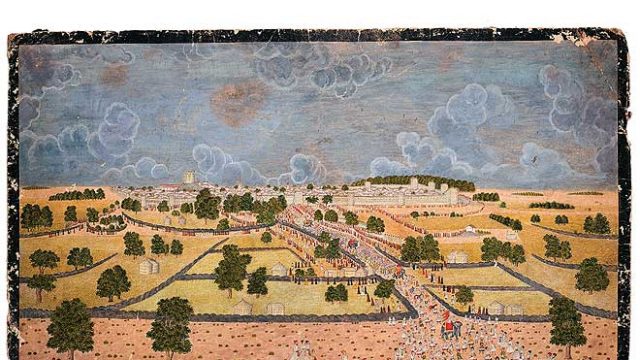Often, nothing brings a place alive as does a painting. While European painting has a long tradition of landscape paintings, India’s own landscape painters are often overlooked. In art historian B.N.Goswamy’s acclaimed new book The Spirit of Indian Painting: Close Encounters with 101 Great Works 1100-1900 (Penguin, Rs 1,499), he rightly focusses on this glaring gap in our understanding of the Indian landscape paintings. One of his chosen ‘Great Works’ is this beautiful painting, made sometime towards the end of the 18th century. It charts the royal procession of the Rao of Kutch, probably the art connoisseur and patron Rao Lakhpatji. But that’s not all. Goswamy notes that around the time, paintersin Kutch had been exposed to European engravings of landscapes, thanks to the artworks brought back by the merchant Ram Singh Malam.
Goswamy writes about the painting: “The unnamed Kamnagar painter of Kutch — having seen a whole range of European engravings of landscapes and city views — sets out here to paint what can only be called an ‘atmospheric picture’. The elements he draws upon for doing this are the rumbling grey clouds in the sky, the walled town of Anjar in the far distance, the procession of the Rao, the retinue that spills over the paths and the fields, and the green expanse of land all around. He invests the scene with a distinct sense of place and of occasion, but the emphasis is clearly upon creating an atmosphere.”
Goswamy thinks that the painter is celebrating the land as much as the Rao, or the importance of the fortified city of Anjar in this painting. He writes, ”And then of course there is the expanse of land, the cultivated fields close to the city walls taking over where the brown, fallow land in the foreground ends. It is all, in its own way, a poetic celebration of this fertile tract of land.”




